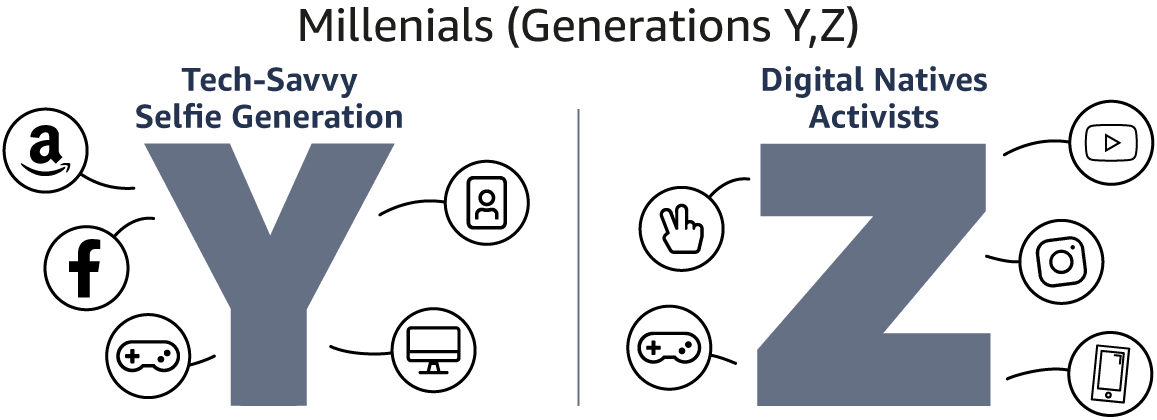As more tech-savvy employees enter the workforce, businesses must think about how to engage Millennial and Gen Z employees during the onboarding process. After spending months finding the right person for a job, you don’t want to lose them due to a corporate onboarding process that doesn’t resonate or set them up for success. You risk shrinking that new-employee honeymoon phase with boredom and disillusionment.
Instead of leaving your new hires to read a manual or watch videos of company presentations, consider using gamification to create active challenges and track progress with shared metrics.
What is onboarding gamification?
Onboarding gamification is an approach that engages workers in corporate training and other learning activities using entertaining activities, rewards, gratification, and feedback. As a set of techniques, gamification uses tools refined in video games and apps to drive engagement with onboarding content.
There’s a good reason gamification works. Video game and app developers discovered decades ago that by asking social scientists to analyze user behavior, they could refine the software to encourage engagement—even addiction. Thank a social scientist every time you smile when your post gets liked, or your iMessages “ping” for attention. The techniques of behavioral design apply as directly to training as they do to entertainment. Instead of focusing on keeping a gamer on an ad-supported platform, HR managers might apply these same techniques to progress a worker through a structured program to learn a defined set of skills.
To demographers like Pew Research, 1996 is the birth year that defines the border between Millennials and Gen Z. As digital natives, today’s young Gen Z and Millennial workers have high expectations for engaged learning. If you were born in or after 1996, you never knew a world without high-speed internet access. You know you can look up almost anything you’ve ever wanted to know. Chances are, you’ve been using apps and playing video games for most of your life. To this generation, gamified onboarding is more natural, more fun—and more effective—than any passive alternative.

Why change your strategy for Millennial and Gen Z workers?
You’ll need to change your strategy because, simply put, gamification works better. Materials designed for the Post-War and Boomer generations might depend on videos, slideshows, and manuals, but they will never be as effective for this new cohort. And it’s not just about technology, either.
Current events, social changes, and other forces have left new Millennial and Gen Z employees with very different motivational and behavioral patterns than their Boomer and Gen X parents. While everyone is shaped by their parents to a certain degree, generations as a whole are shaped to some extent by opposition to the previous generation.
Members of both generations are typically comfortable with technology. Smartphone apps, collaboration software, and messaging are as familiar to these generations as jets and TVs were to Boomers. With their social relationships forged online using social media, texting, and other tools, these cohorts seamlessly communicate across time zones and physical locations. Similarly, technical gamification elements like unpredictability and social influence feel natural and make engagement interesting.
Why gamifying the process is effective
Gamifying the process is effective because “fun” is fundamentally a manipulation of behavior that leaves participants wanting more. The modern video game and social media industry have supported extensive social science research into human behavior. The result has been the development of social and interactive learning techniques, such as those described by Yu-kai Chou’s framework, that are much more sophisticated than the badges, progress bars, and notifications of the past. We’re already seeing tools like Slack and Workday take hold and apply the social engagement of Facebook into the serious business of project collaboration.
Applying the research of gaming and social media into gamified onboarding can lead to important progress toward corporate goals for new hires:
- Improved productivity comes from better knowledge of how an organization functions. For example, setting employees on a “quest” to learn from other employees allows new reps to spend more time “doing” and less time finding out “how to do” tasks at their new company.
- Increased retention rates for new employees are ensured because individuals feel empowered and productive as quickly as possible. Effective onboarding programs can get new employees past those critical first 6 months when an estimated 86% of new hires make the decision to stay or leave a company.
- Aligning business goals with onboarding is easier with a structured program that builds content for new hires with key business goals in mind. Without structure, new employees will learn on the job, and the company has less control over how the worker perceives the company, their day-to-day-work, and overall goals. By aligning onboarding games and activities with key company goals, businesses can reinforce core values and instill the right habits from day one.
- More consistent results come from a structured program, which can be measured and refined over time based on feedback and results.
- Better understanding of progress and areas for improvement is possible through a more structured, goal-oriented approach to onboarding. Gamified onboarding (as part of a larger onboarding program) allows you to gather feedback and data, and use that information for evaluation cycles that are key to continuous improvement. Adding competitions and social connections, for example, generates data that can be used to track the progress of the program itself.
- Support for continuous training requires onboarding new employees in a structured and gamified program, which sets up expectations for continuous training.
Effective onboarding programs can get new employees past those critical first 6 months when an estimated 86% of new hires make the decision to stay or leave a company.
How technology can help
Game mechanics don’t have to be derived from software, but it can help. At Deloitte LLP, for example, the onboarding program is very gamified. Early on, compliance, privacy, and ethics training materials were taught using a game board, modeled after the popular game “LIFE.” Today, the firm has expanded on the model to build an online game called The Chosen Analyst to teach professional consultants’ skills around a narrative of the coming Zombie Apocalypse.
Deloitte learned the power of game mechanics first, then applied technology to serve those objectives. The process pulled from storytelling the way traditional video games do. A story, like the Zombie Apocalypse, had to be compelling—and a little outlandish—to be fun. A good onboarding platform implements the best gamification elements so that corporate resources can focus on learning to be transferred to new employees. Best practices for gamification elements include:
- Game mechanics like points for accomplishments, bonuses for special features, time-based tracking and a progress countdown, defined goals and levels, and an acknowledgment of status.
- Engagement where participants develop stories, take on challenges and quests, and develop characters and avatars
- Elements that give participants control over the game, the freedom to fail, and consistent feedback.

Recent disruptions caused by the novel Coronavirus pandemic have given firms everywhere an appreciation for virtual learning platforms and self-paced training activities that keep training moving even when participants can’t travel or interact directly. With cloud-based tools that can be continuously refined based on engagement and progress metrics, modern training platforms are applying these best practices to one of the biggest challenges in human resources: onboarding.
The revenue generated by billions of gamers and social media users has created a golden age for social science research into online user behavior. Mindtickle has now applied this research to onboarding as a way to optimize how Millennial and Gen Z digital natives learn when they join the workforce. Onboarding success has the potential to not only improve retention, but also drive productivity and predictable quota attainment.


 By Helen Waite
By Helen Waite


 New to MINDTICKLE?
New to MINDTICKLE? WHO WE HELP
WHO WE HELP COMPANY
COMPANY RESOURCES
RESOURCES